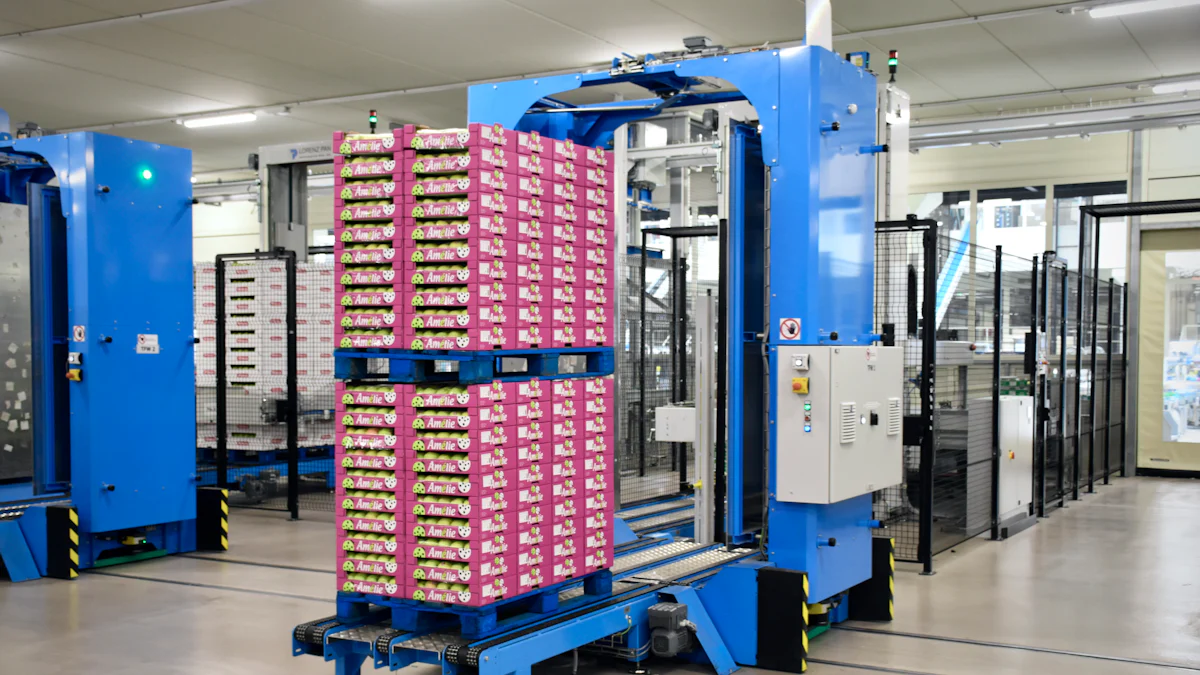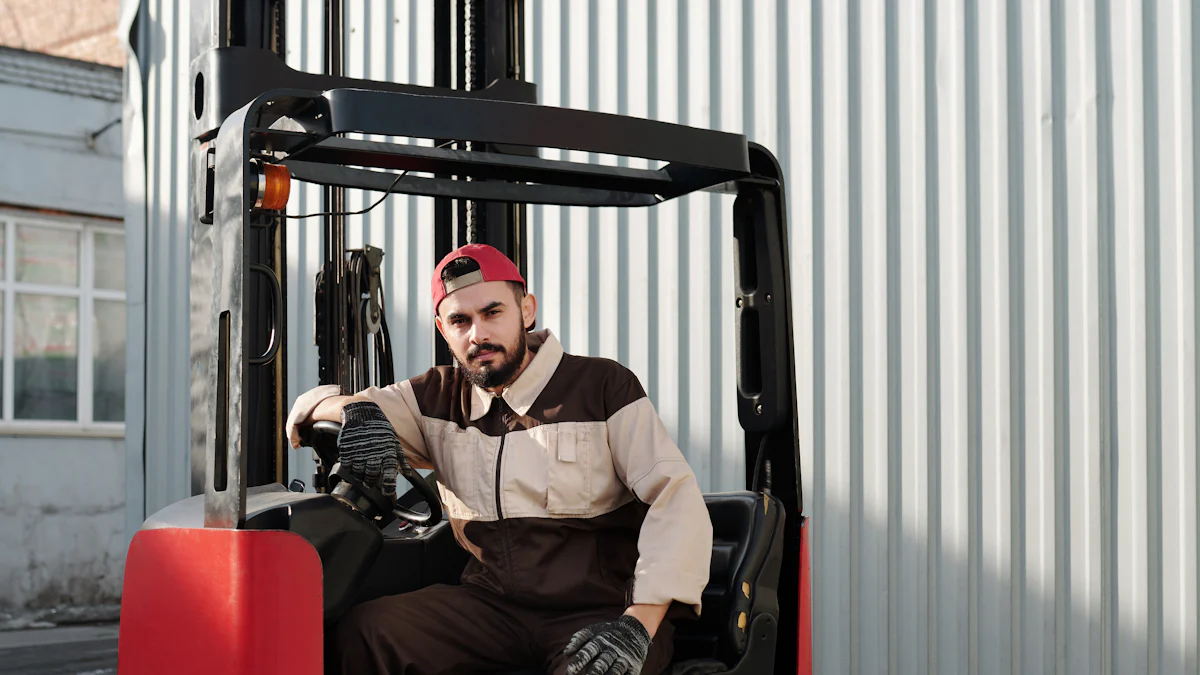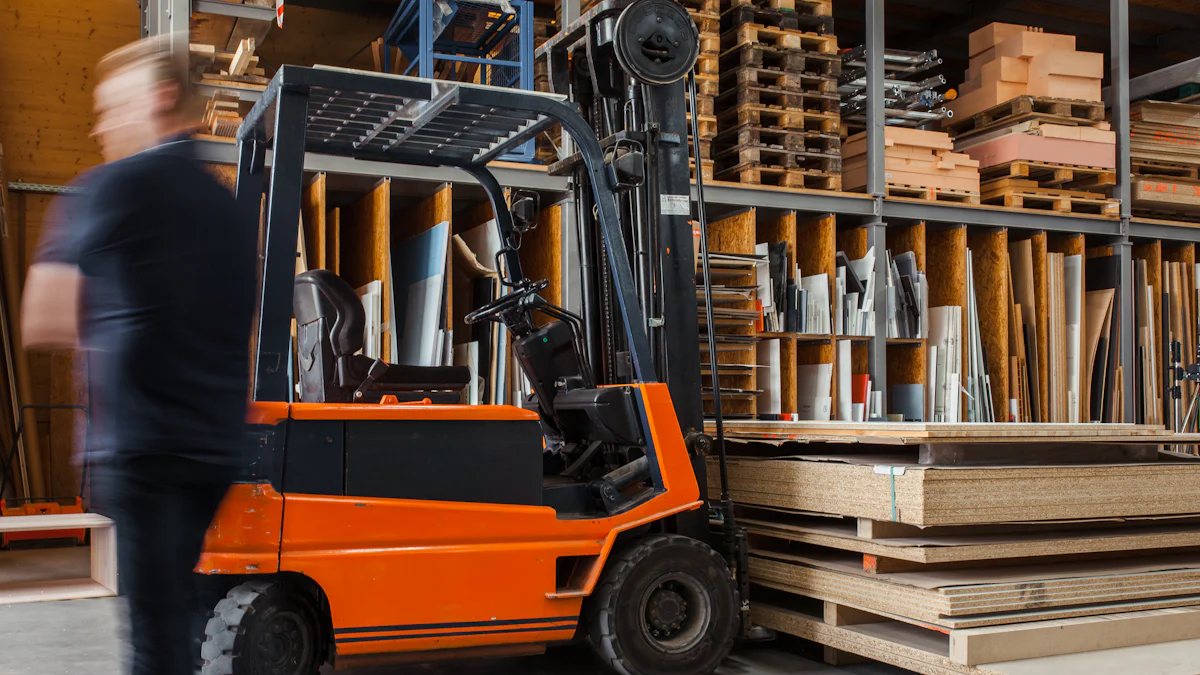
In the realm of warehousing, the full electric pallet stacker self-load forklift stands as a beacon of efficiency. Its integration of cutting-edge technology has revolutionized material handling operations. The significance of incorporating full electric pallet stacker self-load forklift with self-loading capabilities cannot be overstated in modern logistics. This blog embarks on a journey to dissect the advantages and drawbacks of these innovative solutions, providing invaluable insights for decision-makers navigating the dynamic landscape of warehouse management.
Understanding Full Electric Pallet Stackers

Electric Pallet Stackers, also known as pallet jacks, represent a pivotal component in the realm of modern warehousing. These innovative machines are designed to streamline material handling operations efficiently. The integration of cutting-edge technology has propelled the evolution of these stackers, enhancing their functionality and performance.
What Are Full Electric Pallet Stackers?
Full Electric Pallet Stackers, such as boldElectric Pallet Stackersbold, are sophisticated machines engineered to optimize the movement and stacking of pallets within warehouse environments. Their core functionality revolves around seamlessly lifting and transporting heavy loads with precision and ease.
Evolution of Pallet Stackers
The transition from manual pallet stackers to electric variants marks a significant milestone in warehouse management. This evolution has been characterized by a shift towards automation and enhanced operational capabilities. The introduction of self-loading features has further augmented the efficiency and versatility of these stackers.
Pros of Full Electric Pallet Stackers with Self-Loading Features

Increased Efficiency
- Electric pallet stackers enhance operational efficiency by significantly reducing loading and unloading times.
- Operators experience a notable decrease in manual labor requirements when utilizing full electric pallet stacker self-load forklift.
Enhanced Safety
- Workplace injuries are minimized due to the advanced safety features integrated into full electric pallet stackers.
- Operators benefit from improved ergonomics, ensuring a comfortable working environment.
Cost Savings
- Over time, full electric pallet stackers contribute to lower operational costs through increased efficiency.
- The reduced need for additional equipment translates to significant cost savings for warehouse operations.
Environmental Benefits
Reduced carbon footprint
Electric pallet stackers have a positive impact on the environment by reducing the carbon footprint associated with traditional material handling equipment. The efficient operation of full electric pallet stacker self-load forklift results in lower energy consumption and emissions, contributing to a greener warehouse environment.
Compliance with environmental regulations
By utilizing full electric pallet stackers, warehouses can align with stringent environmental regulations and sustainability standards. These advanced machines are designed to meet eco-friendly criteria, ensuring that operations adhere to environmentally conscious practices.
Cons of Full Electric Pallet Stackers with Self-Loading Features
High Initial Investment
Investing in a full electric pallet stacker self-load forklift entails substantial financial commitment. The purchase cost of these advanced machines can be significant, requiring careful budget consideration. Additionally, the installation and setup expenses associated with full electric pallet stackers further contribute to the initial investment required.
Maintenance and Repairs
Maintaining and repairing full electric pallet stacker self-load forklifts involves specialized requirements. These machines demand meticulous attention to detail and expertise to ensure optimal performance. Moreover, the availability of spare parts for timely repairs is crucial in minimizing operational disruptions and maximizing efficiency.
Technological Dependence
The operation of full electric pallet stackers relies heavily on software integration and automation mechanisms. This technological dependence introduces a level of complexity that necessitates continuous monitoring and maintenance. Furthermore, there is a potential risk of technical glitches that may impact the seamless functioning of these innovative stackers.
Training Requirements
Need for Operator Training
- Proper training is essential to ensure the safe and efficient operation of full electric pallet stacker self-load forklifts.
- Operators must undergo comprehensive training programs to familiarize themselves with the functionalities and safety protocols of these advanced machines.
- Training sessions cover various aspects, including equipment handling, emergency procedures, and maintenance practices.
Learning Curve for New Technology
- Embracing new technology introduces a learning curve that operators need to navigate effectively.
- Adjusting to the intricacies of full electric pallet stacker self-load forklifts may require time and dedication from operators.
- Continuous learning and adaptation are crucial in mastering the operational nuances of these innovative material handling solutions.
Comparative Analysis
Full Electric vs. Manual Pallet Stackers
Efficiency comparison
- Full electric pallet stackers excel in operational efficiency by streamlining material handling processes with precision and speed.
- Manual pallet stackers, on the other hand, may involve more manual effort and time-consuming operations to achieve similar tasks.
Cost comparison
- The initial investment for full electric pallet stackers might be higher due to advanced technology and features, but they offer long-term cost savings through increased productivity.
- Manual pallet stackers typically have lower upfront costs but may incur higher operational expenses over time, considering manual labor requirements and maintenance needs.
Full Electric vs. Semi-Electric Pallet Stackers
Performance differences
- Full electric pallet stackers exhibit superior performance capabilities, providing efficient handling of heavy loads with minimal operator strain.
- Semi-electric pallet stackers offer a balance between manual operation and automation, catering to specific applications that require moderate load capacities.
Suitability for different applications
- In high-demand environments where speed and efficiency are paramount, full electric pallet stackers are ideal for maximizing productivity.
- Semi-electric pallet stackers are well-suited for applications that require flexibility in operation while maintaining a level of manual control over the handling process.
- Summarize the transformative impact of full electric pallet stackers with self-loading features on warehouse operations.
- Reflect on the balance between efficiency gains and initial investment challenges.
- Advise potential buyers to assess operational needs carefully before investing in this advanced technology.
- Anticipate future advancements in pallet stacker technology, focusing on enhanced automation and ergonomic design for optimal performance.
Post time: Jun-28-2024
